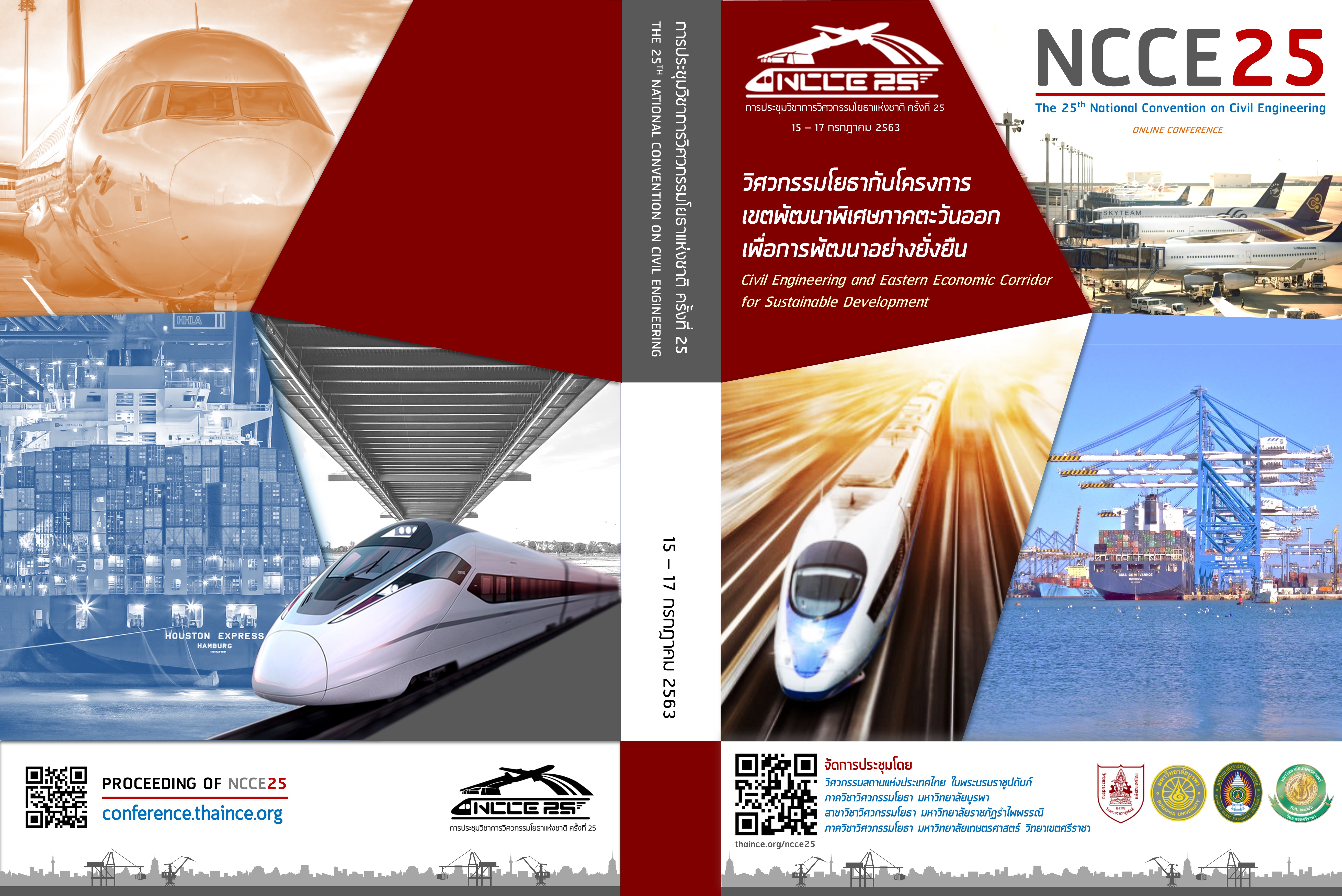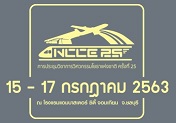Threshold total chloride content and depassivation time of embedded steel of concrete containing ground granulated blast-furnace slag
Keywords:
ปริมาณคลอไรด์ทั้งหมดวิกฤต, ระยะเวลาการเริ่มเกิดสนิม, คอนกรีต, ตะกรันเตาถลุงเหล็กบดAbstract
This research aims to study the effect of ground granulated blast-furnace slag (GGBFS) on the threshold total chloride content and depassivation time of embedded steel of concrete. GGBFS was used as partial binder replacement at the amount of 30%, 40%, 50% and 70% by weight of binder. The water to binder ratio (w/b) was kept at 0.50. The 2-cm covering depth of the embedded steel was used. The experimental results indicated that the value of threshold total chloride content and depassivation time of concrete with GGBFS was higher than that of cement concrete. The threshold total chloride content decreased, but the depassivation time of concrete increased when increasing in the cement replacement by GGBFS. The threshold total chloride content of concrete with 30% of GGBFS was the highest, while the depassivation time of steel in concrete with 40% of GGBFS was the longest. However, the compressive strength of GGBFS concrete at 28 days was lower than cement concrete. The increase of GGBFS content resulted in the decrease of compressive strength.
Downloads
References
[2] Fajardo, G.ม Valdez, P. and Pacheco, J. (2009). Corrosion of steel rebar embedded in natural pozzolan based mortars exposed to chlorides. Construction and Building Materials, 23, pp. 768–74.
[3] Topu, I.B. and Boga, A. R. (2010). Effect of ground granulate blast-furnace slag on corrosion performance of steel embedded in concrete. Materials and Design, 31, pp. 3358–3365, 2010.
[4] Yeau, K.Y. and Kim, E.K. (2005). An experimental study on corrosion resistance of concrete with ground granulate blast-furnace slag. Cement and Concrete Research, 35, pp. 1391–1399.
[5] เอกศักดิ์ ฤกษมหาลิขิต, ทวีชัย สำราญวานิช, ภัควัฒน์ แสนเจริญ และ สมนึก ตั้งเติมสิริกุล (2552). ความต้านทานคลอไรด์ของปูนซีเมนต์ปอร์ตแลนด์มอร์ต้าร์ที่ผสมเถ้าลอย ฝุ่นหินปูนและสารขยายตัว. การประชุมวิชาการวิศวกรรมโยธาแห่งชาติ ครั้งที่ 14.
[6] นุสรา ขยันกิจ, ทวีชัย สำราญวานิช, ภัควัฒน์ แสนเจริญ, สมนึก ตั้งเติมสิริกุล (2555). ความต้านทานการแทรกซึมคลอไรด์ของคอนกรีตที่ผสมผงหินปูนและเถ้าลอยแทนที่วัสดุประสานในสิ่งแวดล้อมทะเลเป็นเวลา 2 ปี. การประชุมวิชาการวิศวกรรมโยธาแห่งชาติ ครั้งที่ 17.
[7] มอก.20-2543. เหล็กเส้นเสริมคอนกรีต: เหล็กเส้นกลม. มาตราฐานผลิตภัณฑ์อุตสาหกรรม, ประเทศไทย.
[8] ASTM G109-07 (2004). Standard test method for determining the effects of chemical admixture on corrosion of embedded steel in concrete exposed chloride environments. Annual Book of ASTM Standards, 3.02.
[9] ASTM C876 (2004). Standard test method for half-cell potentials of uncoated reinforcing steel in concrete. Annual Book of ASTM Standards, 4.02.
[10] ASTM C1152 (2004). Standard test method for acid-soluble chloride in mortar and concrete. Annual Book of ASTM Standard, 04.02.
[11] Kayyali, O.A. and Haque, M.N. (1998). Chloride penetration and the ratio of Cl-/OH- in the pores of cement paste. Cement and Concrete Research, 18, pp. 895–900.
[12] Ann, K.Y. and Song, H.W. (2007). Chloride threshold level for corrosion of steel in concrete. Corrosion Science, 49, pp. 4113–4133.
[13] ลีน่า ปรัก และ ทวีชัย สำราญวานิช (2556). ความต้านทานคลอไรด์ของคอนกรีตผสมตะกรันเตาถลุงเหล็กบดและผงหินปูน. การประชุมวิชาการวิศวกรรมโยธาแห่งชาติ ครั้งที่ 18.
Downloads
Published
How to Cite
Issue
Section
License
บทความทั้งหมดที่ได้รับการคัดเลือกให้นำเสนอผลงานในการประชุมวิชาการวิศวกรรมโยธาแห่งชาติ ครั้งที่ 25 นี้ เป็นลิขสิทธิ์ของ วิศวกรรมสถานแห่งประเทศไทย ในพระบรมราชูปถัมภ์



